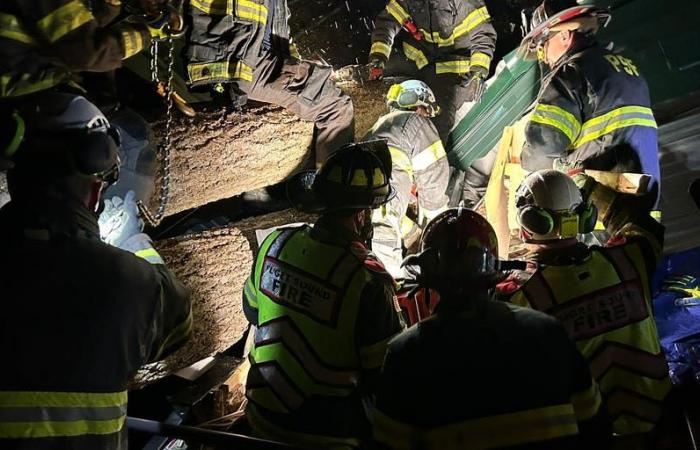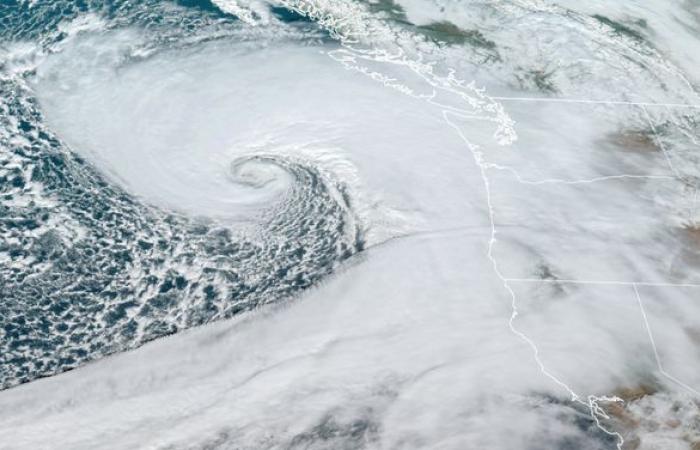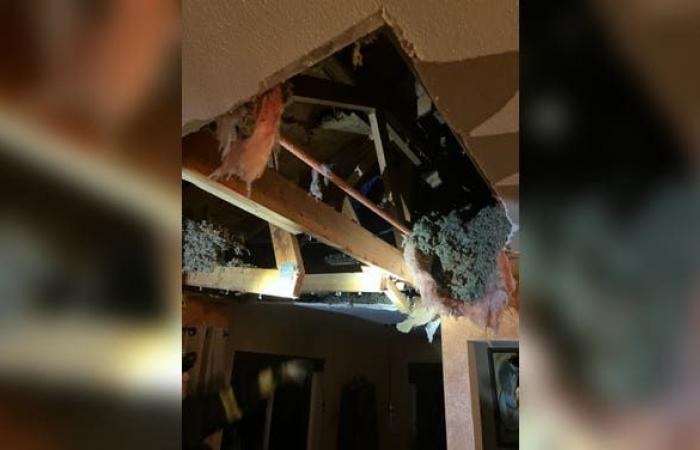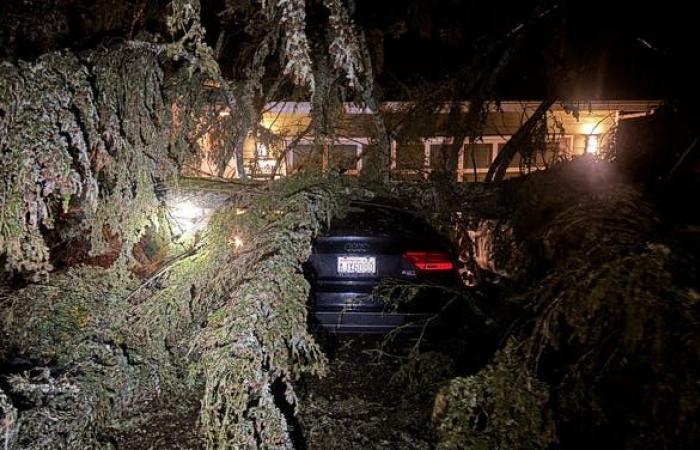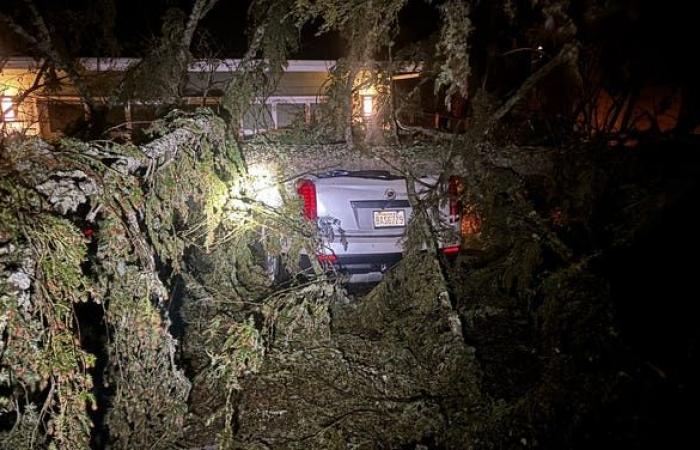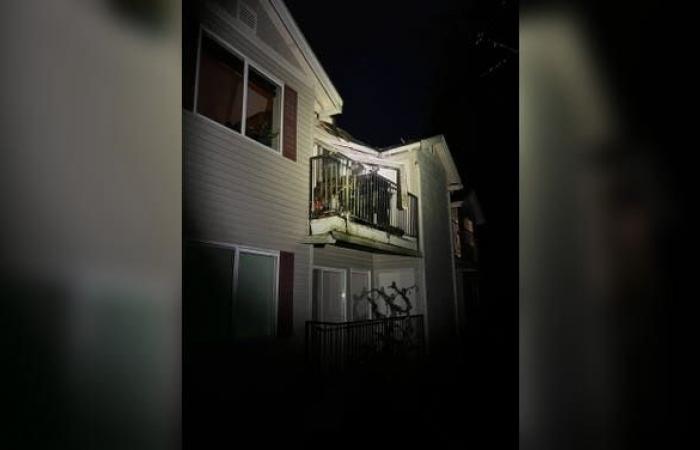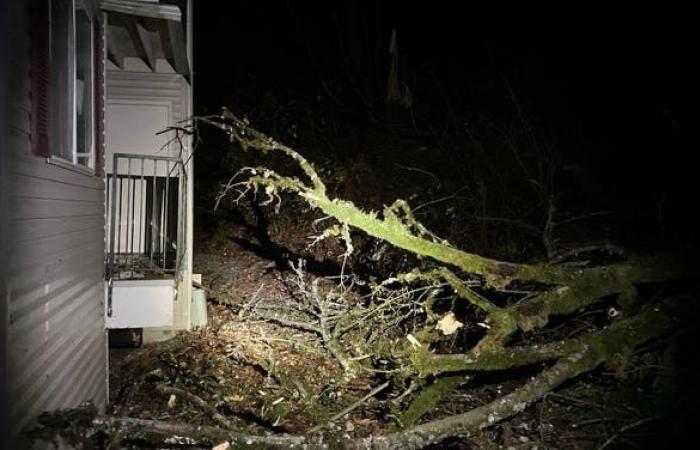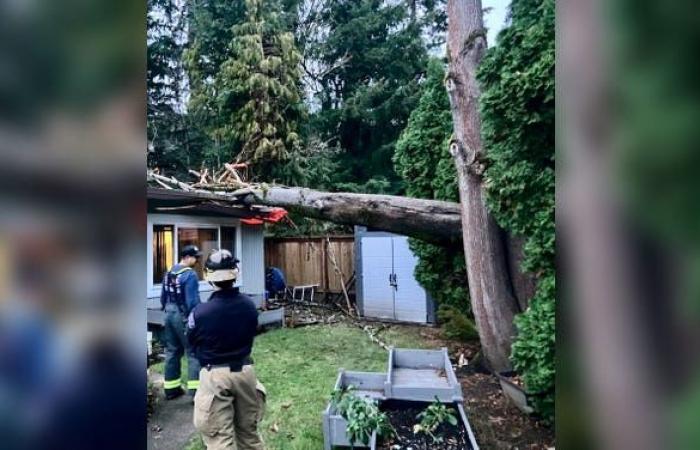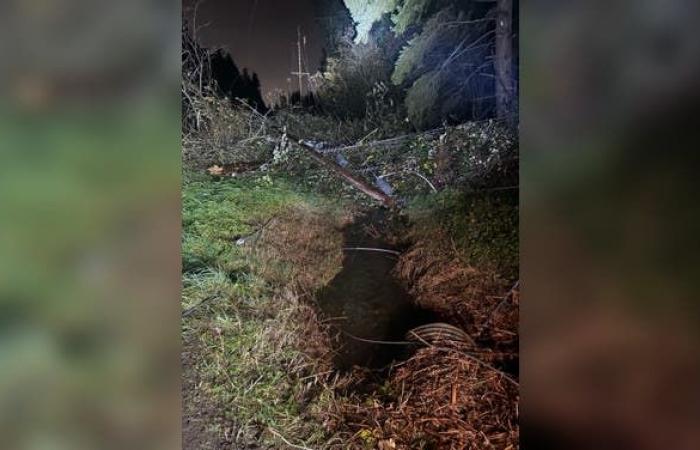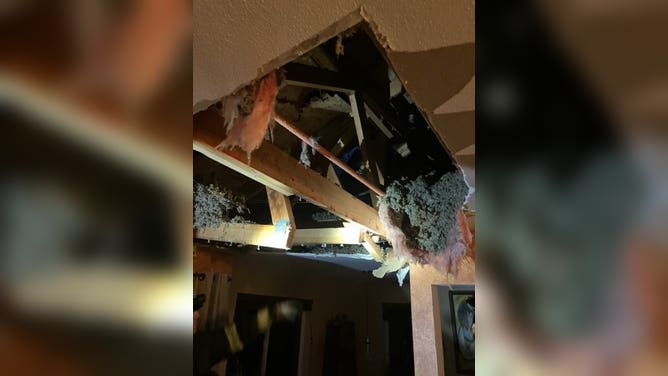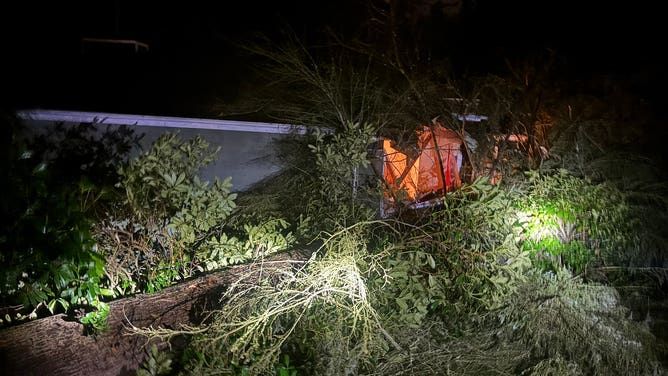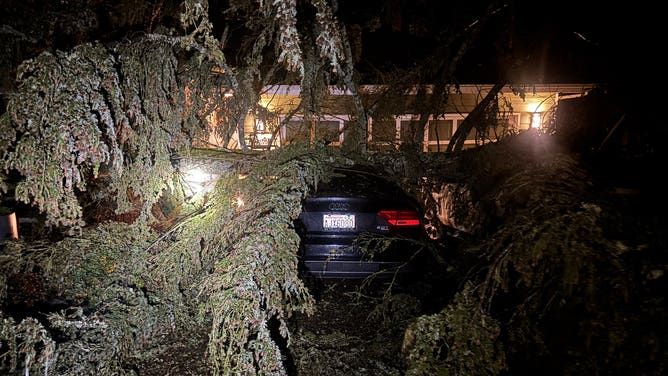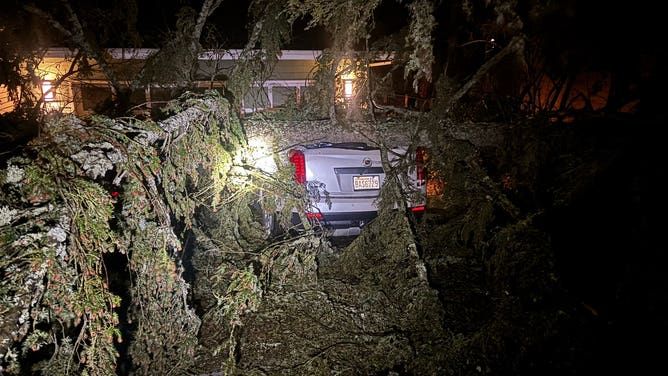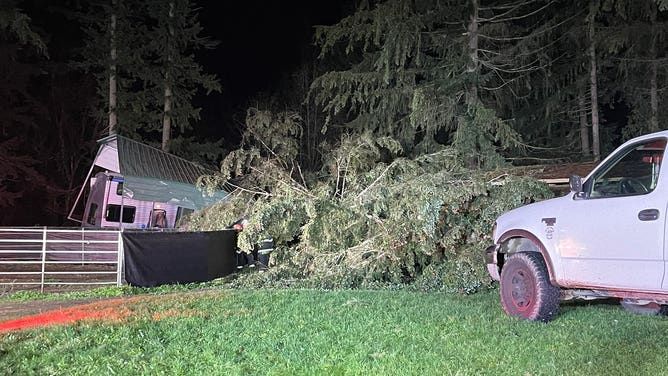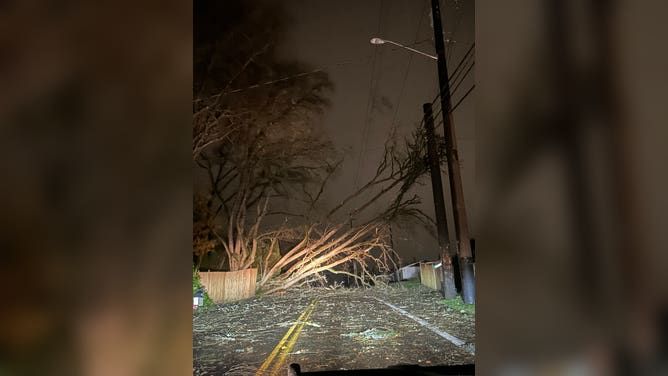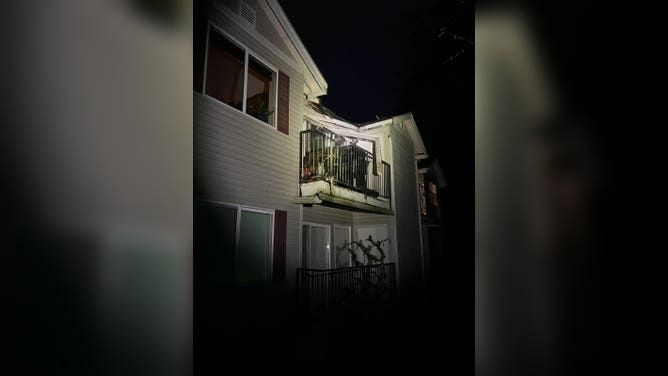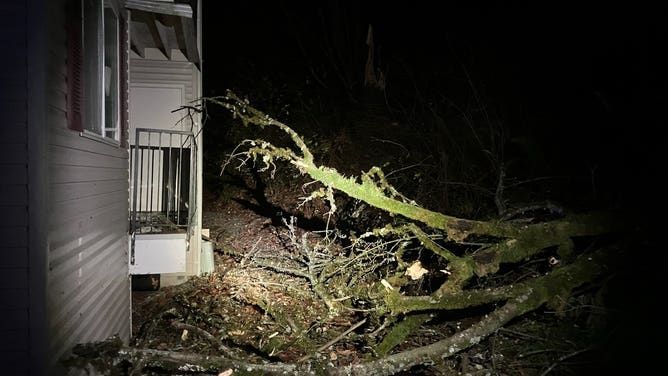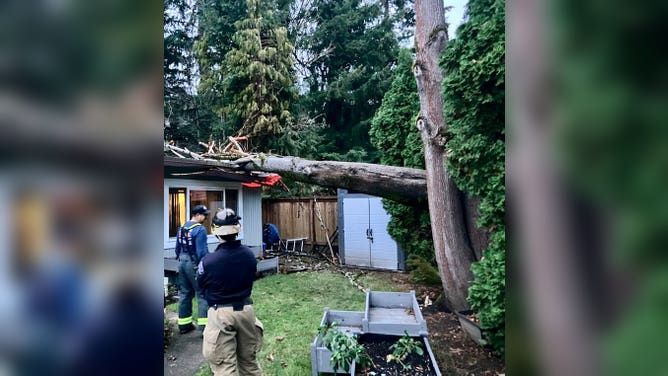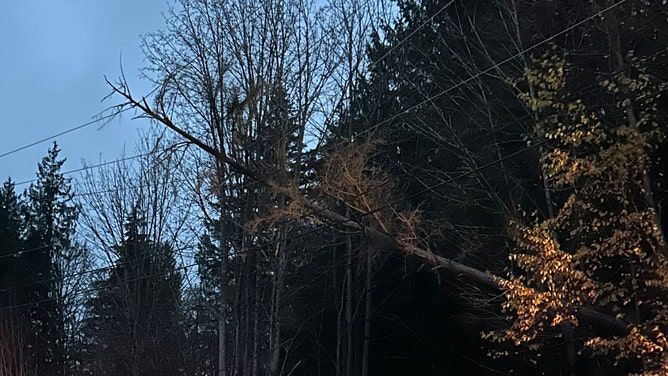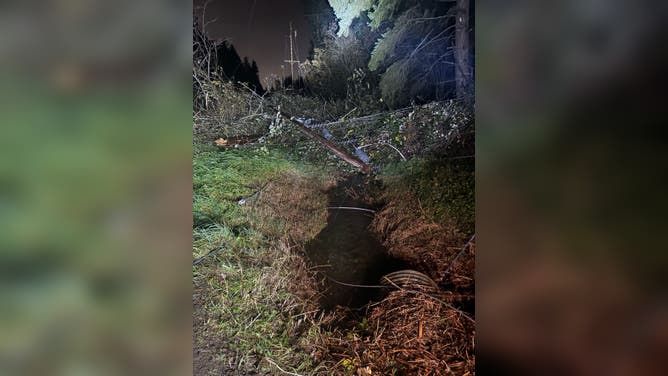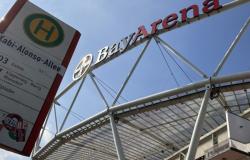A major atmospheric river has made landfall along the northern California coast and will rage on for days. From Washington to California, the impacts of this atmospheric river and bomb cyclone off the coast are widespread.
SEATTLE — The effects of a rapidly developing “bomb cyclone” slammed the Seattle area Tuesday night, killing at least one person and injuring two others as 50-75 mph winds toppled trees across the region.
A woman was killed in Lynnwood when a tree fell into an encampment, according to South County Fire officials.
The Seattle Fire Department reported that a tree fell onto a car and trapped a driver in the northeastern part of the city late Tuesday night. That person was rescued and taken to a hospital in stable condition.
Hundreds of thousands of customers in Washington State are without power.
The state’s Department of Transportation reported multiple road closures due to downed trees.
Sound Transit’s Link light rail system, which services Puget Sound, announced it is operating with a delayed start.
WHAT IS A BOMB CYCLONE?
High winds from a bomb cyclone brought down trees across Washington’s coast Tuesday night, like this tree that smashed a car in Mukilteo. Washington’s Department of Transportation reported numerous downed trees blocking roads (KCPQ).
South of Seattle, two others were injured when a tree fell into their trailer in Maple Valley, reported Puget Sound Fire.
One person was freed quickly, but it took firefighters an hour to free the other resident who was trapped in the mangled debris. Both were taken to local hospitals, but their conditions were not given.
HOW TO WATCH FOX WEATHER
2 injured when tree fell onto trailer in Maple Valley, Wash. on Nov. 19, 2024
(Puget Sound Fire)
Wind gusts in the Cascade foothills just east of Seattle reached over 70 mph, fueled by a low pressure center that underwent explosive development in just hours as it swirled off the Washington coast.
WATCH: PLANE TRIES TO LAND WITH 52 MPH WINDS AS BOMB CYCLONE STRIKES WASHINGTON STATE
Bomb Cyclone Satellite Image
(NOAA)
An estimated more than 700,000 people had lost power across Western Washington as of early Wednesday morning, according to PowerOutage.US. Over 100,000 of them were in the city of Seattle.
A wind gust reached 74 mph in the town of Enumclaw before the wind gauge went dark, along with the rest of the town.
“The sound out here is unreal!” said Anthony Concannon. “The wind in the trees and power lines is deafening.”
In Bellevue, the state’s 5th-most populous city, gusts of 52 mph sent firefighters scrambling to assist multiple neighborhoods reporting trees into homes.
“Trees are coming down all over the city & falling onto homes,” Bellevue Fire officials said. “If you can, go to the lowest floor and stay away from windows. Do not go outside if you can avoid it.”
State and local city departments said multiple main highways were blocked by falling trees and power lines, including stretches of busy State Routes 18, 516 and 169. Just before midnight, a tree fell across 4 lanes of Interstate 405 in Bellevue.

Tree falls into home in Issaquah, WA
(Eastside Fire & Rescue)
“There are so many trees and power lines down, we would be posting the locations till the lights turn on,” an exasperated Snohomish Regional Fire & Rescue posted on X.
Easterly gusts reached 59 mph at Sea-Tac Airport, where the rare east winds brought pilots a challenging crosswind to navigate runways aligned for the persistent southerly winds the region normally endures.
Bomb cyclone drops 66 millibars of pressure in 24 hours
The storm was brought about by a historic storm that went from an innocuous low pressure trough to tying the strongest storm ever recorded in that part of the Pacific Ocean. Measurements showed the storm dropped 66 millibars in pressure in 24 hours, eventually becoming a storm with a central pressure of 943 millibars – on par with a major Category 4 hurricane. It easily qualified for the title of “bomb cyclone”, given when a storm strengthens about 24 millibars in 24 hours.
While the deep center of the storm remained hundreds of miles offshore, the alignment of the storm due west of the Washington Coast combined with cold, dense higher pressure in eastern Washington created a tremendous difference in pressure across the western half of the state.

Tree falls into home in Issaquah, WA
(Eastside Fire & Rescue)
Wind from eastern Washington slammed into the barrier created by the Cascade Mountains, but gaps in the terrain along the mountain passes created breaks in the barrier, allowing winds to accelerate and shoot through the passes like a hole in a balloon.
The winds pummeled towns nestled along the foothills that sit along the highways providing gateways to the popular hiking trails and ski resorts.
As the east winds reached the western edges of the Cascades and broke free of their mountain captors, they raced across the Puget Sound lowlands, bringing rare easterly winds that caught off guard the forested landscapes steeled to the more common southerly winds of the region. The result was widespread tree falls from north to south along the Puget Sound region.
The winds were expected to abate by early Wednesday morning, allowing an extensive cleanup effort to begin.

